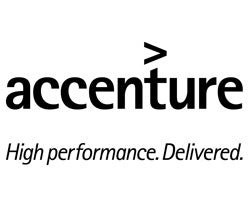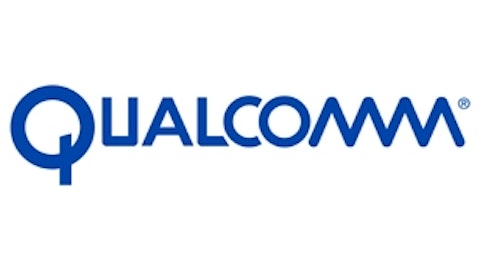Introduction and General Observations of the Information Technology Sector
Dividend growth investors seeking quality dividend growth stocks to fund their retirement portfolios have not historically looked to the Information Technology sector. Traditionally, the Information Technology sector has been associated with higher growth and higher risk. However, in addition to higher growth, many technology companies are also very cyclical in nature. Another common attribute for tech companies is how they have traditionally utilized their capital. In order to finance their high-growth needs, the majority of Information Technology companies have traditionally not paid dividends. Instead, they used their capital to fund future growth. However, another contributing factor to the no dividend policy of Information Technology companies was the nascent nature of this industry.
But with the passing of time, the Information Technology sector has matured. Today, we find an eclectic mix of large and mature companies, mixed in with younger and smaller enterprises. Moreover, Information Technology has become an integral and ubiquitous part of virtually every other sector. In other words, no matter what industry or sector a business operates in, today they are all using technology to make their businesses more efficient, productive and more profitable. Therefore, as information technology has evolved and matured, the way investors relate to this industry needs to evolve and mature along with them.
Nevertheless, and with the above said, many of the old attributes associated with Information Technology continue to persist. On the other hand, the characteristics’ of companies within the Information Technology sector remains fragmented and diverse. Because one aspect of the Information Technology sector that has not changed, is the dynamic nature and evolution of technology itself. Inventiveness remains a key trait of the Information Technology sector. 
The continuous evolution of the Information Technology sector brings with it both great risk and great opportunity. Consequently, the Information Technology sector presents both a great challenge and a great opportunity at the same time for investors seeking above-average total returns and even a growing dividend income stream. More simply stated, I believe that the dividend growth investor should not make the mistake of ignoring this exciting and dynamic sector, but at the same time extreme caution and continuous monitoring are warranted. But I believe the opportunities to turbo-charge a dividend growth portfolio are potentially extraordinary, and worth the additional risks.
Part of my reasoning behind strategically adding select Information Technology dividend paying growth stocks to a dividend growth portfolio is supported by the omnipresent need and demand that every company in every industry must make use of technology today in order to remain competitive. Moreover, the sheer size of Information Technology today brings with it the necessity for large players within the industry. For technology to remain relevant, it requires the size and scale that only large companies can deliver in order to support the seamless integration of technology across all industries and boundaries. In other words, technological standards and protocols must be universally implemented and applied.
Although innovation remains the lifeblood of the Information Technology sector, it has been increasingly common to see startups offering breakthrough technologies turn to larger established technology stalwarts to provide the scale and marketing depth required for success. Supporting that process is the need that larger established technology companies have to look to innovative startups as sources of their future growth.
I believe this symbiotic relationship will continue, notwithstanding the occasional emergence of companies offering revolutionary and disruptive technologies capable of completely rewriting the very nature of the Information Technology sector itself. Names like Google, Facebook and Twitter come to mind. But so does the rapidly-progressing mobile technologies, cloud computing, nanotechnology and other potentially disruptive technologies too numerous to mention. Herein rests one of the greatest risks of investing in technology.
But as fascinating as the rapidly-changing face of technology is, it has been equally as fascinating to watch how the capital structures of many of the most renowned technology companies have morphed from pure growth stocks, to perhaps becoming the Dividend Champions or Dividend Aristocrats of tomorrow. Later in the article, I will review several examples.
The Information Technology Sector
This is the ninth in a series of articles designed to find value in today’s stock market environment. However, it is the eighth of 10 articles covering the 10 major general sectors. In my first article, I laid the foundation that represents the two primary underlying ideas supporting the need to publish such a treatise. First and foremost, that it is not a stock market; rather it is a market of stocks. Second, that regardless of the level of the general market, there will always be overvalued, undervalued and fairly valued individual stocks to be found.
My first article was titled “Searching For Value Sector By Sector,” my second article was titled “Finding Great Value In The Energy Sector.” My third article was titled “Finding Value In The Materials Sector Is A Material Thing.” My fourth article was titled “The Industrial Sector Offers A Lot Of Value, Dividend Growth And Income.” My fifth article was titled Beware The Valuations On The Best Consumer Discretionary Dividend Growth Stocks, and my sixth article was titled, Are Blue-Chip Consumer Staples Worth Today’s Premium Valuations?, my seventh article For A Healthier Portfolio – Look Here, and my eighth article Is The Financial Crisis Over For Financial Stocks?
As a refresher, my focus in this and all subsequent articles will be on identifying fairly valued dividend growth stocks within each of the 10 general sectors that can be utilized to fund and support retirement portfolios. Therefore, when I am finished, the individual investor interested in designing their own retirement portfolio should find an ample number of selections to properly diversify a dividend growth portfolio with.
This article will look for undervalued and fairly valued individual companies within the general sector 45-Information Technology. Within this general sector, there are several subsectors, which I list as follows:


Conservative Information Technology Candidates
The following comprises my list of conservative dividend paying Information Technology stocks, they might also be considered the blue-chip stalwarts of this industry. Most of the names are obvious and well-recognized companies. Some of these candidates have been paying and growing their dividends for many years, while others are dividend paying newbies. As previously stated, perhaps the most interesting attribute among this group of Information Technology companies is how many are morphing from traditional pure growth stocks to becoming more like traditional dividend paying companies within other sectors.
Although most of these companies are still expected to grow at above-average rates, most of them are not expected to grow at the same rate they historically have. However, the majority are expected to grow at rates greater than the average dividend paying company found in other sectors. Moreover, the majority of these candidates also offer above-market dividend yields and below-market average valuations. Automatic Data Processing (NASDAQ:ADP) is an exception and only included because it has historically been priced at a premium valuation to its earnings growth.

A Picture Is Worth 1000 Words
On the notion that a picture is worth 1000 words, and in order to spare the reader from enduring the same, I will let the F.A.S.T. Graphs™ research tool on each featured company speak for itself. For those who are not familiar with how these Earnings and Price correlated Graphs are designed and function, I provide the following link: The Interpretation of The Earnings and Price Correlated F.A.S.T. Graphs™ Made Simple.
With the above said, I will suggest that the reader take note of some key facts on each graph. First and foremost, notice how price follows earnings. Next, focus on the earnings growth rate that each of these companies has historically achieved. Then check out the performance that this growth has provided to the company’s shareholders in comparison to the Standard & Poor’s 500 over the same timeframe.
Next, note that the Estimated Earnings and Return Calculator or forecasting graph will, in most cases, represent a growth rate that is different than what is found on the historical graphs. Any buy, sell or hold decisions should be made with more attention given to the forecasting graphs than on the historical graphs. On the other hand, the historical graphs tell a lot about how well each of the companies you are reviewing has historically been managed and performed.
Finally, compare the growth rates, track records and future potential of each of these companies in contrast to the expectations of the average dividend growth stock. To be clear, the average blue-chip dividend growth stock will possess historical and forecast growth rates within the range of 7% to 10% per annum. Therefore, as you review these companies I recommend asking yourself whether you believe the growth rates of these companies are worth the risk. Moreover, ask yourself how much additional risk, if any, these icons of technology really represent.
Accenture Plc (NYSE:ACN) Historical Graph
“Accenture is a global management consulting, technology services and outsourcing company, with 261,000 people serving clients in more than 120 countries.”

Accenture Plc (NYSE:ACN) Performance Graph

Accenture Plc (NYSE:ACN) Forecasting Graph

Oracle Corporation (NASDAQ:ORCL) Historical Graph
“Oracle Corp, incorporated in 2005, is a provider of enterprise software and computer hardware products and services. The Company’s software, hardware systems, and services businesses develops, manufactures, markets, hosts and supports database and middleware software, applications software, and hardware systems, with the latter consisting primarily of computer server and storage products.”

Oracle Corporation (NASDAQ:ORCL) Performance Graph

Oracle Corporation (NASDAQ:ORCL) Forecasting Graph

QUALCOMM, Inc. (NASDAQ:QCOM)
Since most of the companies on this conservative list are highly recognized names in technology, I have assumed that the reader is more likely than not familiar with each of them. However, I did want to call out one featured dividend growth stock in the Information Technology sector that I felt might be most appealing.
“ABOUT QUALCOMM INCORPORATED
Qualcomm Incorporated (NASDAQ: QCOM) is the world leader in 3G, 4G and next-generation wireless technologies. Qualcomm Incorporated includes Qualcomm’s licensing business, QTL, and the vast majority of its patent portfolio. Qualcomm Technologies, Inc., a wholly-owned subsidiary of Qualcomm Incorporated, operates, along with its subsidiaries, substantially all of Qualcomm’s engineering, research and development functions, and substantially all of its products and services businesses, including its semiconductor business, QCT. For more than 25 years, Qualcomm ideas and inventions have driven the evolution of digital communications, linking people everywhere more closely to information, entertainment and each other.”
QUALCOMM, Inc. (NASDAQ:QCOM) Historical Graph

QUALCOMM, Inc. (NASDAQ:QCOM) Performance Graph

QUALCOMM, Inc. (NASDAQ:QCOM) Forecasting Graph

Aggressive Information Technology Candidates
I am not sure that it is appropriate for me to call the following candidates aggressive because many of my conservative selections are expected to offer higher growth than some of these. Therefore, I offer this large list of candidates because they may be unfamiliar Information Technology companies to many readers. Moreover, I might add that any company from this following list would require extensive and comprehensive research prior to investment. Since this series of articles is focused on pre-screened but not comprehensively researched companies in numerous sectors, it is important to point out the necessity for further due diligence.



Broadridge Financial Solutions, Inc. (NYSE:BR) Historical Graph
“Broadridge Financial Solutions Inc is the leading provider of investor communications and technology-driven solutions for broker-dealers, banks, mutual funds and corporate issuers globally.”

Broadridge Financial Solutions, Inc. (NYSE:BR) Performance Graph

Broadridge Financial Solutions, Inc. (NYSE:BR) Forecasting Graph






